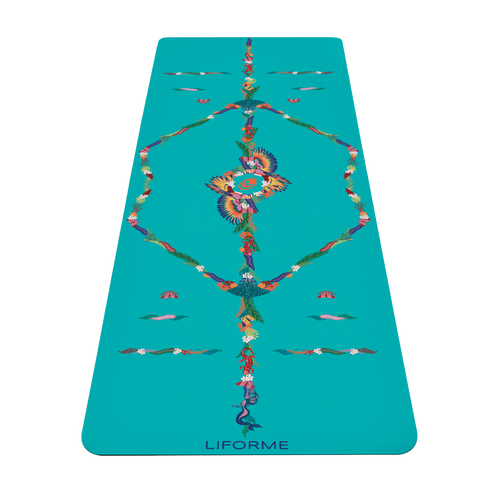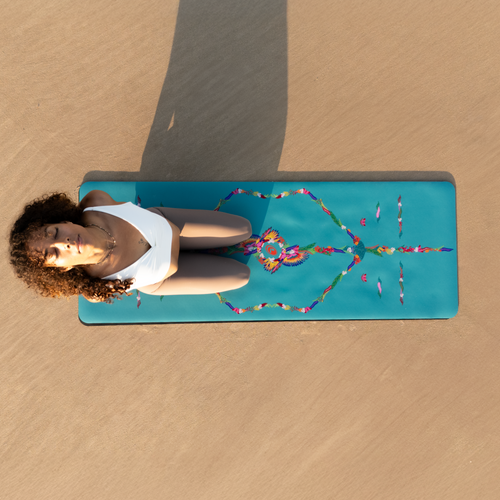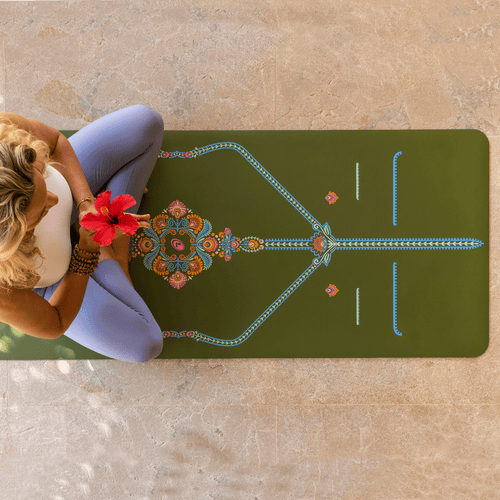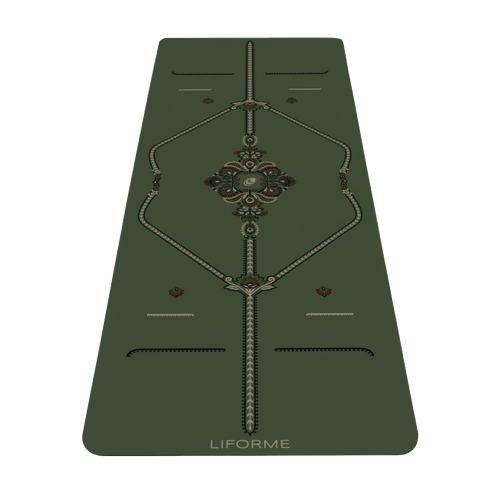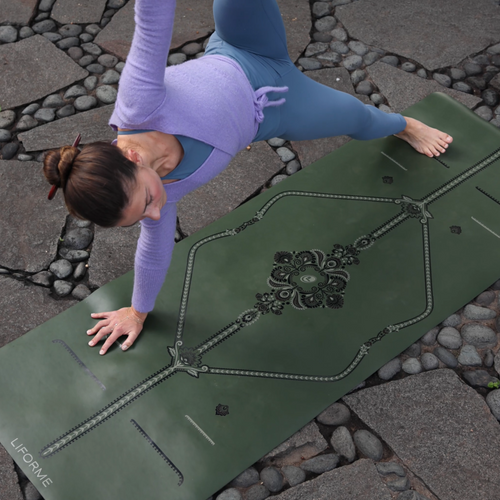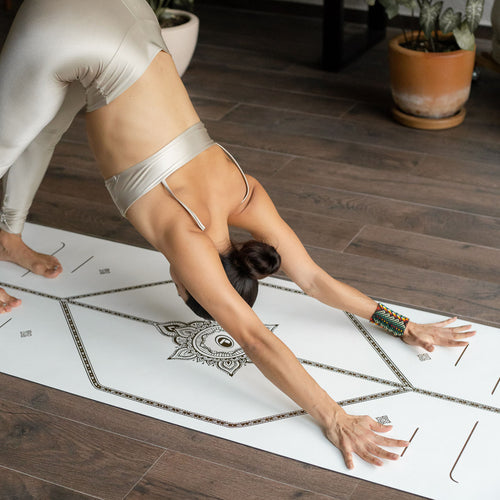Chair pose (sometimes also called Awkward Chair) is practised in slightly varied forms across many different yoga asana traditions. What’s an awkward chair? It’s one that isn’t there! In Utkatasana, you lower your bottom as if you were about to take a seat, only to discover that you have to hold the sitting position unsupported.
Chair is done frequently in Ashtanga Yoga as part of the Sun Salutation B sequence (Surya Namaskar B). In Ashtanga, the emphasis is on keeping the torso upright, even bringing a slight backbend into the upper spine, pressing the palms together overhead, and bringing the gaze toward the hands so the head drops back. Iyengar Yoga takes a slightly different approach. In Light on Yoga, which is often considered the definitive source for pose alignment, B.K.S. Iyengar depicts the torso at a slight diagonal, the chest open, and a very deep bend in the knees so that the thighs are almost parallel to the floor. For most people, a knee bend this deep precludes a vertical spine, so you have to choose which to prioritize. The version that is prevalent in contemporary classes (and described below) is a bit of an amalgamation. It allows for an angled upper body with arms overhead at shoulders’ distance apart while the legs are bent at about a 45-degree angle to the floor and the buttocks stick out behind.
Health Benefits of Practising Chair Pose
Iyengar explains that utkata can mean powerful or fierce. This pose fires up the legs, strengthening the glutes, quads, calves, and ankles. With the arms lifted, it also works the shoulders and upper back. Though you feel the intensity of the pose primarily through the burning in your thighs, the pelvis and abdomen are also actively involved. Utkatasana is very balancing for the pelvis. It helps develop the awareness to maintain a neutral position of the pelvis with the tail neither tucked nor flared. Meanwhile, the belly is toned to support the upper body. The body’s relationship with gravity leads to a firm foundation and a feeling of groundedness and connection with the Earth.
Instructions
1. Stand at the front of your mat in Mountain Pose (Tadasana). The feet should be parallel. You can choose whether to bring your feet to touch or to keep them hips’ distance apart. Just keep in mind that if your feet are touching, your knees will be touching in the final pose and if your feet are apart, your knees should also stay apart. When the legs are together, they feel more like one unit but taking them apart gives you a wider, more stable base. If you’re not sure what the difference is, try it both ways and see which one you prefer.
2. Bend both your knees, taking your butt back. Ground down through your heels and your toes to make sure that your weight is evenly distributed.
3. Deepen your knees to a point where you can hold your position for several breaths. For most people, that’s going to be with the thighs at roughly a 45-degree angle to the floor, but you can go deeper. If your feet are separated, make sure that your knees stay over your ankles and do not cave in or splay out.
4. Although your butt is sticking out, don’t flare your sit bones as this will bring too much of a curve into your lower spine. At the same time, don’t tuck your tail and round the lower spine. The pelvis is at an angle but stays aligned with the spine.
5. Hug your belly button gently toward your spine to engage the core and knit your ribs together. If your rib cage is sticking out, draw it back in.
6. Roll your shoulders back to open your chest. Lift your arms up and in line with your torso. Keep your arms parallel to each other with the palms facing or bring the palms to touch if you can do so without your shoulders creeping up towards your ears. Slide your shoulder blades down your back.
7. In this version of the pose, your body makes a zig-zag shape, like a lightning bolt hitting the ground.












